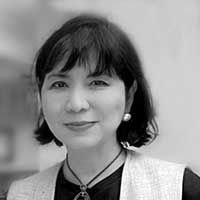The real macau LIFE & STYLE

September 21, 2003 | 12:00am
 Iused to think of Macau as a weekend paradise for gamblers and playboys. An Asian Las Vegas where big-time gamblers played blackjack, baccarat and roulette 24 hours non-stop. And if they did stop, they’d forget about their losses by watching risqué striptease shows at the Crazy Paris Show.
Iused to think of Macau as a weekend paradise for gamblers and playboys. An Asian Las Vegas where big-time gamblers played blackjack, baccarat and roulette 24 hours non-stop. And if they did stop, they’d forget about their losses by watching risqué striptease shows at the Crazy Paris Show.
That was how I saw Macau some 20 years ago. I couldn’t think of any reason to go back.
But a recent trip to this 25.4 square-kilometer paradise south of China, just beside Hong Kong, opened my eyes to the real Macau.
Going to Macau is actually a breeze once you’re in Hong Kong, where a fast and comfy turbojet boat ride from Kowloon costs less than a hundred HK dollars. Or you can take an Air Macau flight from Manila and land in Macau in just an hour and a half.
Macau has a charming, relaxed atmosphere with a dual personality. It is so Chinese and yet so Portuguese, and often the line between these two personalities gets blurred.
You see Chinese structures adorned with Mediterranean stucco, a Taoist temple and a Catholic Church on the same street, and statues of oriental icons standing tall amid high-tech skyscrapers.
This dual personality of Macau is so vividly portrayed at the Museum of Macau where you only have to look to your left to understand Macau’s European heart, and to your right to grasp its Chinese soul.
At the second level, you feel its Macanese essence, with classic Macanese dining rooms, weddings, occupations and pastimes depicted in mock-up settings. The top floor gives you glimpses of modern Macau. This is one museum that’s not boring at all.
The must-see structure in Macau is the Sao Paulo, or what remains of this church built in 1602 beside the Jesuit College of St. Paul where personalities like St. Francis Xavier once walked through its hallowed halls. The Sao Paolo’s stone facade with staircase is a favorite site for picture-taking by tourists.
Off you speed to your next stop. Car lovers and racers who can’t attend the Macau Grand Prix (usually held on the third weekend of November) must at least visit the Grand Prix Museum. Created by the Macau Government Tourist Office to celebrate Macau Grand Prix’s 40th anniversary in 1993, the museum features a collection of fast machines driven by some of the best drivers in the world. It was in 1954 when three Portuguese Macau residents –Fernando de Macedo Pinto, Carlos da Silva and Paulo Antos – organized a rally in Macau. The result is a 6.2 km. road with bayside straightaways and hillside having bends very similar to the famous circuit in Monaco.
From fast cars, you shift gears and go for leisurely shopping, remembering that like Hong Kong, Macau is a duty-free port. But goods are cheaper in Macau because rent is lower there than in Hong Kong. Macau has the best prices when it comes to gold jewellery. Other good buys are Chinese antiques or repros using authentic materials, bamboo birdcages, butterfly-shaped kites, and of course, clothes and shoes.
For bargains, there are street stalls around the Domingos Market (next to the Senado Square) and also around the Red Market.
Speaking of the Senado Square, Macau’s mix-match of cultures is so obvious in this heart of the city, which was modeled after a Portuguese square. There you see the Leal Senado, which is the finest example of neo-classic architecture in Macau.
In Macau, you see how the Chinese and Portuguese share a passion for quiet, urban retreats. Reminiscent of the grand gardens of Europe are the Portuguese-inspired patches of greenery that let Macau breathe.
Of course, amid the European patches of green, you may find an oriental icon. The bi-cultural heritage is apparent, for instance in the statue of Buddhist goddess Kun Iam looming tall in the Macau Outer Harbor. It was designed by a Portuguese sculptor.
One stop that makes you giddy with interest is the Wine Museum which tells the story of wine through pictures, maps, and wine-making gadgets from old Europe. Wine lovers get an intoxicating view of more than a thousand fine wines. For a taste of Portuguese expertise in wines, a glass of wine is given to you as you enter.
But, of course, a trip to Macau is not complete without a taste of lutong Macau. That means Portuguese dishes like bacalahau (codfish that can be boiled, grilled or fried) and caldo verde (vegetable soup with potatoes, cabbage, Portuguese sausage and olive oil). Macanese are proud of their chicken cooked in the oven with potatoes, onions, eggs and saffron, and their chilly and grilled galinha africana. Chinese cuisine in Macau is familiar to Pinoy tastebuds, from dim sum to sharks fin soup to Peking duck.
Now enticing tourists are cake shops in the Portuguese style, such as O Barril, offering cakes accompanied by tea , coffee, wine or soft drinks. No, you wouldn’t go looking for Starbucks in Macau.
There are many more delicious reasons to re-visit Macau. Sampling more of lutong Macau may take another weekend. That might be a good excuse to check how Stanley Ho’s casinos are doing. Or to see if their Crazy Paris Show boasts of Nicole Kidman-types.
BrandSpace Articles
<
>



















